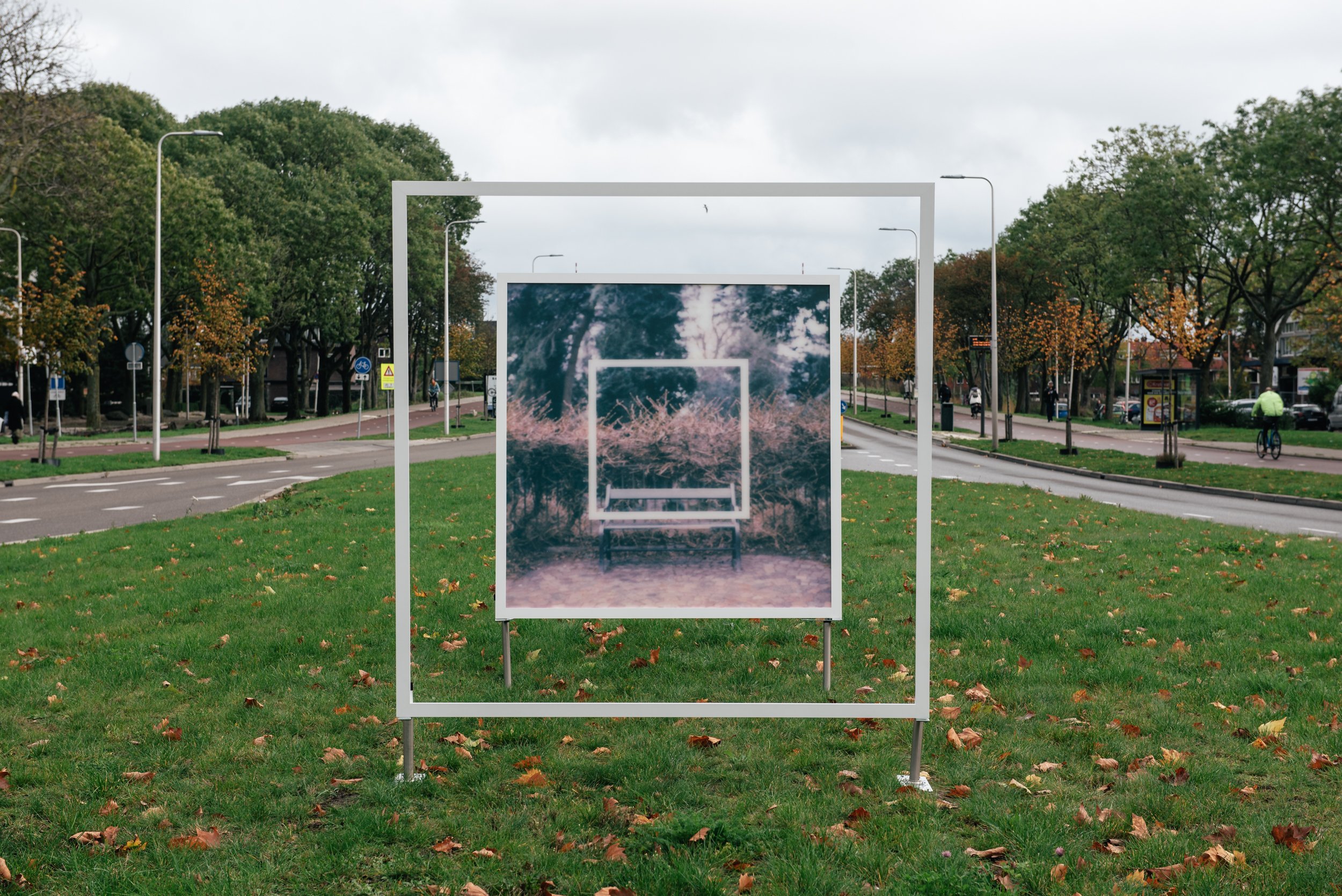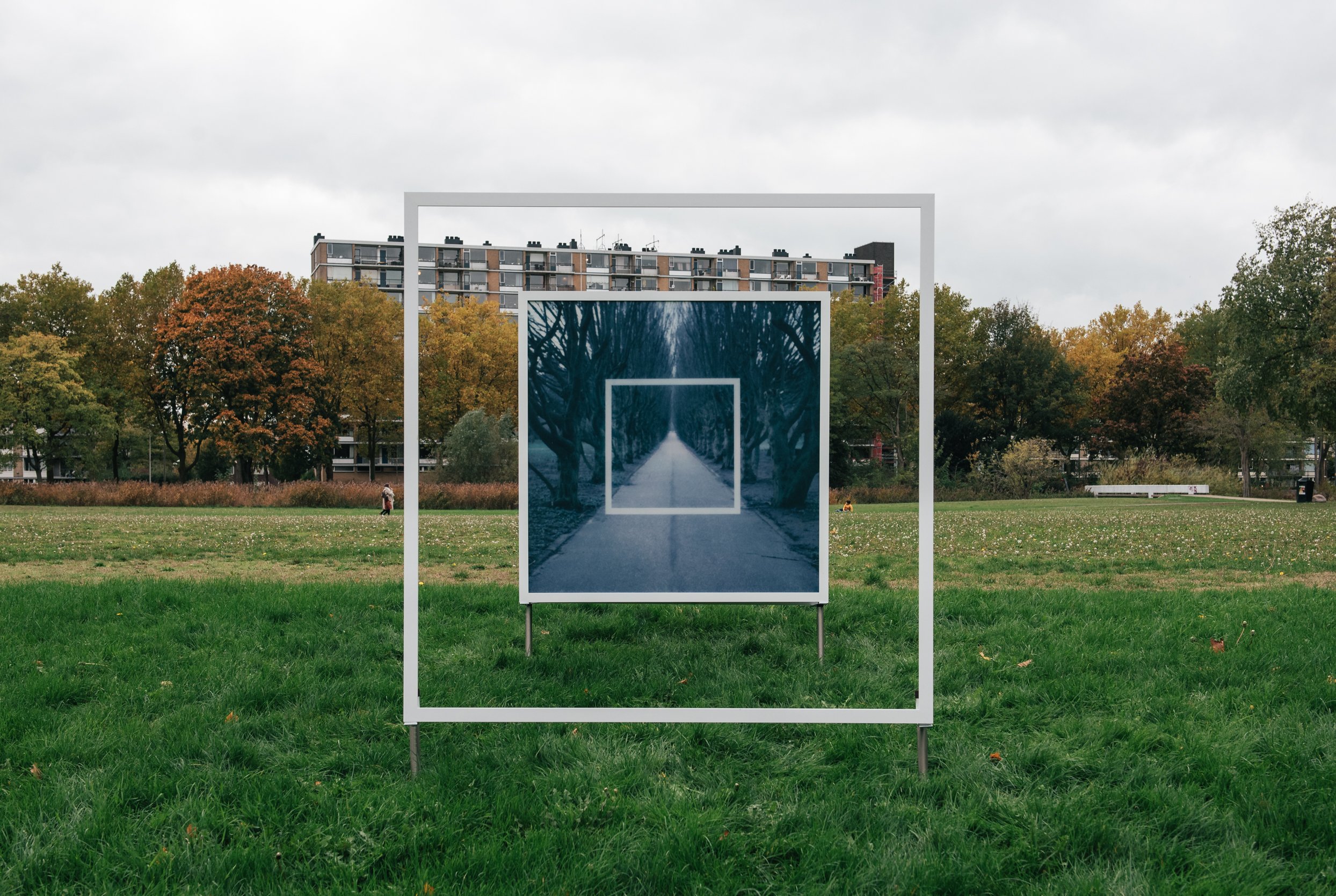Akihiro Boujoh

“I work with elements and systems in the natural world together with artificial materials in order to visualize the gradation from different angles.”
Interview by Brooke Hailey Hoffert
Could you tell us a bit about yourself and your background? Where did you study?
I was born and raised in a small town in Nagasaki. It is in the mountains, so the mountain was my playground. I studied architecture and Japanese gardens at Kyoto Institute of Technology. Through the experience of assistance of the gardener in Kyoto, my interest shifted to the relationship with objects, space, and the surrounding environment. That brought me to UAL Wimbledon College for my MFA. The time in Wimbledon was very rich and the coursemates were quite diverse in age, nationalities, and backgrounds, which helped me to broaden my horizons. Tutors and students were open-minded to try something new discipline, which stimulated my approach as well. After graduation, I settled in the city of Utrecht, the Netherlands. As my hometown is in the mountains, Kyoto is surrounded by mountains, cycling from Peckham/ Brixton where I lived to Wimbledon is very hilly, this is the first time to settle in a flat, completely flat city. I recently realized that I unconsciously expect mountain ridges in the sky when I look up, but it never happens here. These drastic differences in the geographical environment affect my mind and art practice.
What inspired you to begin exploring themes of nature?
My hometown is located in Kyushu, the westernmost tip of Japan, which means intense typhoons hit our area very often, so we have to handle floods, strong winds, or landslides. Earthquakes are being frequent in past decades in the area. Japan is the place we experience how the planet breathes in many aspects. In March 2011, I was in Eastern Japan just until the day before the great earthquake and tsunami happened. The landscape I saw yesterday was completely different the next day. The uncomfortable feeling between nature and human activities I have had since I was younger became clear. A year later, I did a hitchhiking road trip around Eastern Japan. Through the dialogue with all the drivers who picked me up, I start thinking to invite people to think rather than solve the problems.
FOLDS 1, 2021, photography by Atsushi Yukutake
Can you expand more on your interest in how we perceive nature?
Yes. Obviously, We are the most influential species trying to confront and control nature. Nature and human structures are intertwined in every single element. I had once thought all human activities are negative, and against nature. But it denies our existence. There is gradation rather than conflict in our relationship. So I make my work to explore the balance of it. Even in the city centre, there is humidity, wind, sunlight, rain, temperature, etc, still many parts of nature surrounding us. I work with elements and systems in the natural world together with artificial materials in order to visualize the gradation from different angles.
Time is an important theme in your work. You stated “The recent works only last a moment. Seconds after, you would encounter a different perspective.” Can you expand more on that?
As our everyday life is floating on the stream of time, the idea of my work is centralized around transition, interaction, and transformation with natural systems and viewers. The environment where the work is installed and people who walk to see the work, involving those elements around the work into the work makes a particular moment between viewers and the work. many elements are tangled to make the moment. How to intervene in the moment and click the viewer's mind is my interest. It is simply because I personally feel more impact with those kinds of approaches as an experience rather than observing.
Framework 1, 2020 photography by Atsushi Yukutake
Framework 2, 2020 photography by Atsushi Yukutake
Framework 2, 2020 photography by Atsushi Yukutake
Lemon I, II, III, IV, 2021, photography by Atsushi Yukutake
Tell us a bit about how you spend your day / studio routine? What is your studio like?
I usually do admin work in the morning at home, then I work at the studio in the afternoon. After making a timeline for the afternoon in the studio, I go out for shooting, test and make works. I often go to the climbing wall nearby when I am stuck on my work, it always gives me a fresh mindset. I share the studio with other three mates, a product designer, an artist, and a musician. I appreciate the daily conversation with them. They give me inspiration and advice from other disciplines.
How do you go about naming your work?
As I work with series and projects, I basically name the series or project first. I try to keep it simple, but give it multiple meanings that the viewer can imagine and expand on. I also often give simple numbering to individual works.
Is there anything new and exciting in the pipeline you would like to tell us about?
My recent show just finished at York Art Gallery as part of Aesthetica Art Prize 2022 exhibition. I will have two more shows in Utrecht, duo, and solo this year. I'm also working on the porcelain work. To tackle new material is challenging, but I enjoy how to combine certain systems with porcelains. And I am waiting for the result of a few of the coming up year's residency opportunities, I hope it'll get through.
All images are courtesy of the artist
Date of publication: 03/11/22




